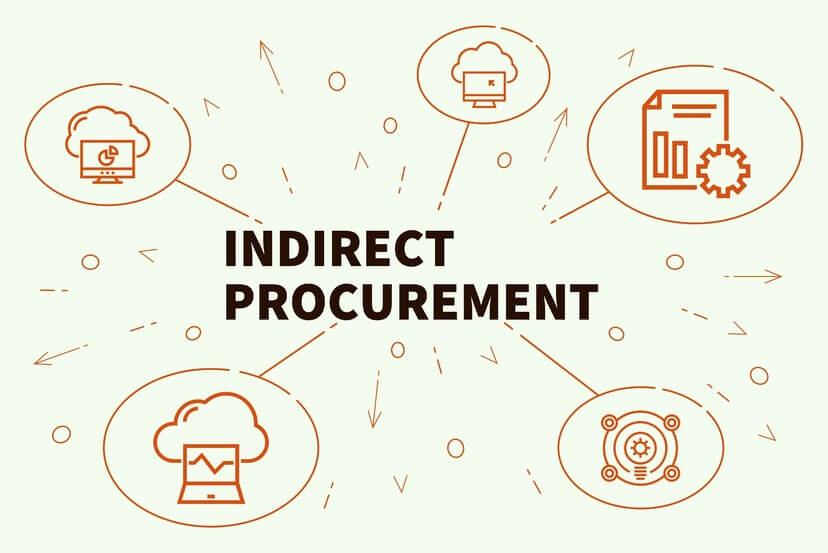The Rise of Smart Indirect Procurement: How CPOs are Redefining Cost Management

Direct procurement, focuses on raw materials and production components, and often receives significant attention. Indirect procurement, covering essential business operations, is a largely untapped area where CPOs can unlock major cost savings and efficiency improvements.
This is where the rise of smart indirect procurement comes into play, empowering CPOs to redefine cost management and drive strategic impact.
What is Smart Indirect Procurement?
Smart indirect procurement goes beyond traditional transactional purchasing.
It’s a strategic approach that leverages technology, data analytics, and collaborative partnerships to streamline processes, gain spend visibility, and optimize costs associated with non-production related goods and services.
It’s about moving from reactive purchasing to proactive, data-driven decision-making.
Why Indirect Procurement Matters?
Indirect procurement, while often overlooked, represents a significant portion of overall organizational spending.
Key indirect procurement areas like office supplies, IT, travel, marketing, and MRO contribute significantly to operational costs.
Inefficient management of these categories can lead to inflated prices, maverick spending, and lost opportunities for cost consolidation.
Smart indirect procurement addresses these challenges, enabling CPOs to gain control over this often-fragmented spending and unlock substantial savings.
How CPOs Are Redefining Cost Management in Indirect Procurement?
CPOs are leveraging several key strategies to transform indirect procurement and drive significant cost improvements:
- Harnessing Data for Spend Analysis: Visibility is the foundation of effective cost management.
CPOs are deploying advanced analytics and spend management software to gain a comprehensive view of spending patterns across all indirect categories.
These tools provide real-time insights into who is buying what, from whom, and at what price.
This granular data allows CPOs to identify opportunities for cost savings, eliminate redundant purchases, and negotiate better pricing with suppliers.
- Adopting Automation: Manual processes, such as invoice processing, purchase order generation, and supplier onboarding, are time-consuming, error-prone, and costly.
CPOs are automating these tasks using specialized procurement platforms and e-procurement solutions.
Automation not only reduces operational costs and frees up valuable time for procurement professionals to focus on strategic activities but also minimizes errors and accelerates procurement cycle times.
- Implementing Category Management: Category management is a strategic approach to organizing procurement activities around specific categories of spend.
CPOs are implementing category management strategies to consolidate spending within key areas, such as IT, office supplies, or travel.
By centralizing procurement for these categories, organizations can leverage their buying power to negotiate better pricing and contract terms with suppliers.
It also reduces the number of suppliers and standardizes product offerings.
- Focusing on Supplier Collaboration: Smart indirect procurement recognizes the importance of strong supplier relationships.
CPOs are moving beyond transactional interactions and building strategic partnerships with key suppliers.
Collaborative relationships foster innovation, improve service levels, and unlock opportunities for cost reduction through joint initiatives, such as value engineering and continuous improvement programs.
- Leveraging AI and Predictive Analytics: Artificial intelligence (AI) and predictive analytics are transforming indirect procurement by providing CPOs with powerful tools for forecasting demand, optimizing pricing, and managing risk.
AI-powered solutions can analyze historical data, market trends, and supplier information to predict future demand for indirect goods and services.
This allows CPOs to proactively negotiate contracts, avoid stockouts, and optimize inventory levels.
Predictive analytics can also help identify potential risks in the supply chain, allowing CPOs to take proactive measures to mitigate disruptions.
Key Benefits of Smart Indirect Procurement
The adoption of smart indirect procurement strategies delivers a range of significant benefits:
- Cost Savings: By gaining spend visibility, consolidating suppliers, and negotiating better pricing, CPOs can achieve significant cost reductions in indirect procurement.
- Operational Efficiency: Automation and streamlined processes improve procurement cycle times, reduce administrative overhead, and free up procurement staff to focus on strategic initiatives.
- Risk Mitigation: Predictive analytics and enhanced supplier collaboration help CPOs identify and mitigate potential risks in the supply chain, ensuring business continuity.
- Sustainability: Smart indirect procurement enables CPOs to integrate environmental, social, and governance (ESG) criteria into procurement decisions, driving sustainability goals and promoting responsible sourcing practices.
Conclusion: The Future of Indirect Procurement
Smart indirect procurement is no longer a futuristic concept; it’s a necessity for organizations seeking to optimize spending, improve efficiency, and drive strategic value.
By embracing data-driven decision-making, automation, and collaborative partnerships, CPOs are transforming indirect procurement from a tactical function to a strategic driver of business success.
Discover how smart indirect procurement can optimize your cost management strategy. Contact us at emea@moglixbusiness.com.

